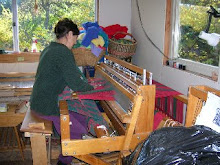Fall has fallen and along with harvesting squash and beans onions, readying the garden for winter it's time we think about saving seeds from some of the plants we are growing. We save seed for a variety of reasons. Some seed just saves itself like the ornamental amaranth that has seeded itself all over the place. We call it feral amaranth. This time of year when most of the flowers are over with we can still harvest beautiful big stalks of it. And the birds love the seeds. So all summer we weed around as much of it as we can.
Some seed gets saved in the process of growing the crop. Like beans where the crop is the seeds. We measure out enough seed to plant next year before we even start thinking about making chili. With a crop like this once you've started growing it you don't need to buy seed again.
We also often save seed from varieties that have been deleted from seed catalogues. For one reason or another the growers of commmercial seeds will decide to replace one variety with another. The new variety may or may no be a better choice for our particular garden site, our micro climate. When that happens we hope we have enough seed left to grow a seed crop so we can keep growing that particular cabbage or kale or chard.
Sometimes there is an unusual plant that crops up in a planting. This year there's a gorgeous hot pink/purple chard that I'd love to grow more of. Because chard is wind pollinated and we want to save seed from our regular strain I'm going to see if a friend will let me transplant the purple chard to her garden to keep it from cross pollinating with any other beet or chard.





I can see that Joel and the farmer are going to get along fine Margaret. I am just calling him to come and read this blog and see your land.
ReplyDelete